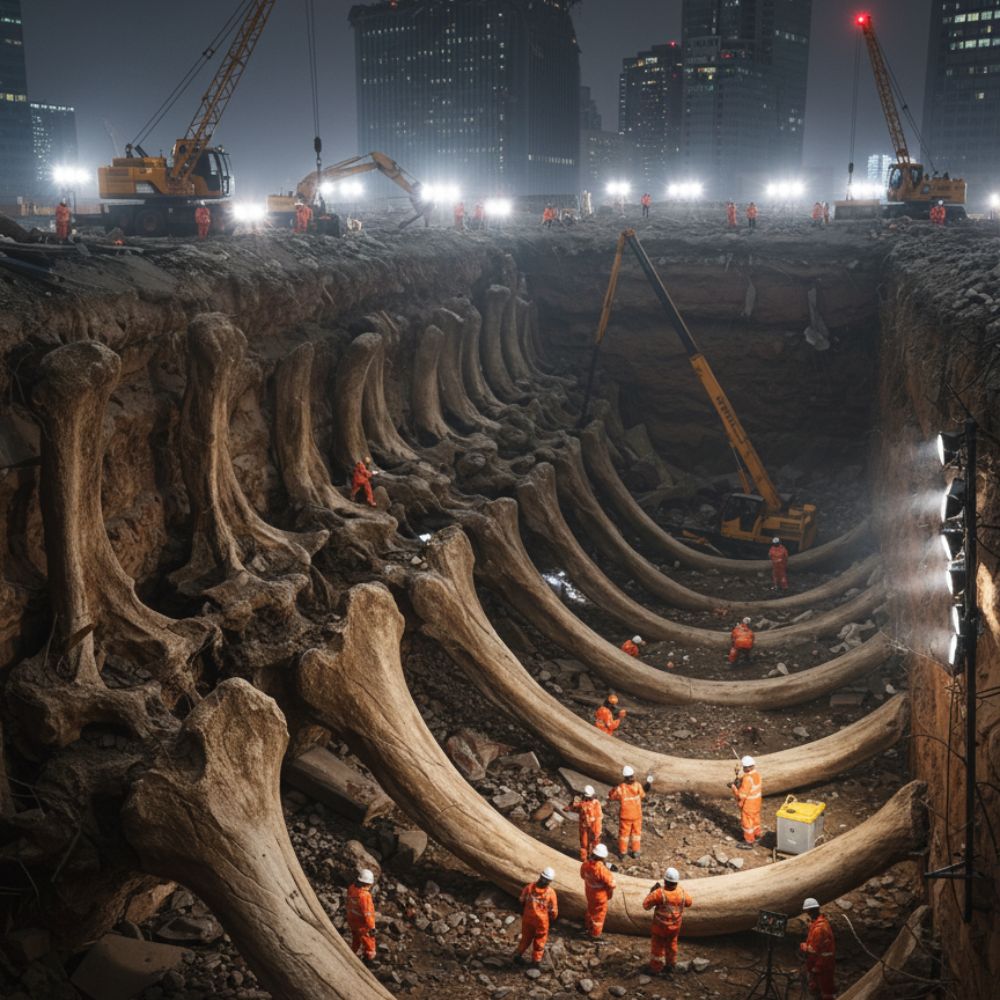Unearthing Giants: The Xi’an Discovery

The year is 2077. Beneath the perpetual hum of Xi’an’s towering arcologies, where drones ferried commuters between gleaming spires of chrome and glass, an unexpected tremor rattled the foundations of progress. It began not with an earthquake, but with a dull thud, an anomalous reading on the deep-ground sonar during the preparatory phase for the new ‘Sky-Garden Nexus’ district. What was initially dismissed as a geological anomaly soon revealed itself to be something far more profound.
Dr. Aris Thorne, head of the Pan-Asian Archaeological Institute, received the encrypted message at precisely 03:00 local time. “Anomaly confirmed. Organic, non-native strata. Size… unprecedented.” He’d spent his career chasing echoes of the past, sifting through digital archives and dust-choked ruins of forgotten dynasties. But this, he felt a primal stir, was different.
Upon arrival, the construction site was a scene of bewildered awe. The initial excavation, intended for a mag-lev conduit, had cleaved through layers of compacted earth and forgotten infrastructure, revealing not bedrock, but bone. Not just any bone, but colossal, petrified arches that dwarfed the robotic diggers. Imagine a subterranean cathedral, its vaults formed not of stone, but of ancient, fossilized ribs, each one as thick as a utility pole and stretching for dozens of meters.
“It’s… a rib cage,” whispered Dr. Mei Lin, his lead paleo-osteologist, her voice barely audible above the distant drone of the city. “But from what? The sheer scale… it defies known paleontology.”
Initial carbon dating placed the remains at an astonishing 150 million years old, pushing the boundaries of what was thought to exist during the Jurassic period in this region. The implications were staggering. Was this a new species of sauropod, exponentially larger than any ever documented? Or something else entirely? The bones themselves, a rich ochre against the grey earth, showed signs of incredible pressure and preservation, a silent testament to eons of geological metamorphosis.
As weeks turned into months, the ‘Sky-Garden Nexus’ project was indefinitely postponed, replaced by a meticulous archaeological dig of unprecedented scale. The site became known globally as the “Xi’an Giant.” Specially designed mobile laboratories were deployed, delicate micro-drones navigated the cavernous spaces between the fossilized ribs, mapping every contour. Each day brought new revelations: massive vertebrae, an impossibly large scapula, and hints of a pelvis that suggested an animal of truly gargantuan proportions, possibly an estimated 300 feet in length.
The discovery sparked a global debate. Was it a terrestrial creature or something that evolved in a vast, ancient ocean that once covered this land? Theories abounded, from a hyper-evolved “Earth Dragon” of Chinese myth to an undiscovered mega-fauna that dwarfed even the titanosaurs. The Xi’an Giant became a symbol of humanity’s enduring quest to understand its place in a universe full of hidden histories, a tangible link to a primordial past that refused to be forgotten, even beneath the gleaming future of one of the world’s most advanced cities. The true identity of the Xi’an Giant remained a mystery, but its unearthing irrevocably altered humanity’s perception of ancient life, reminding them that even in the most technologically advanced eras, the Earth still held secrets vast enough to humble us all.
